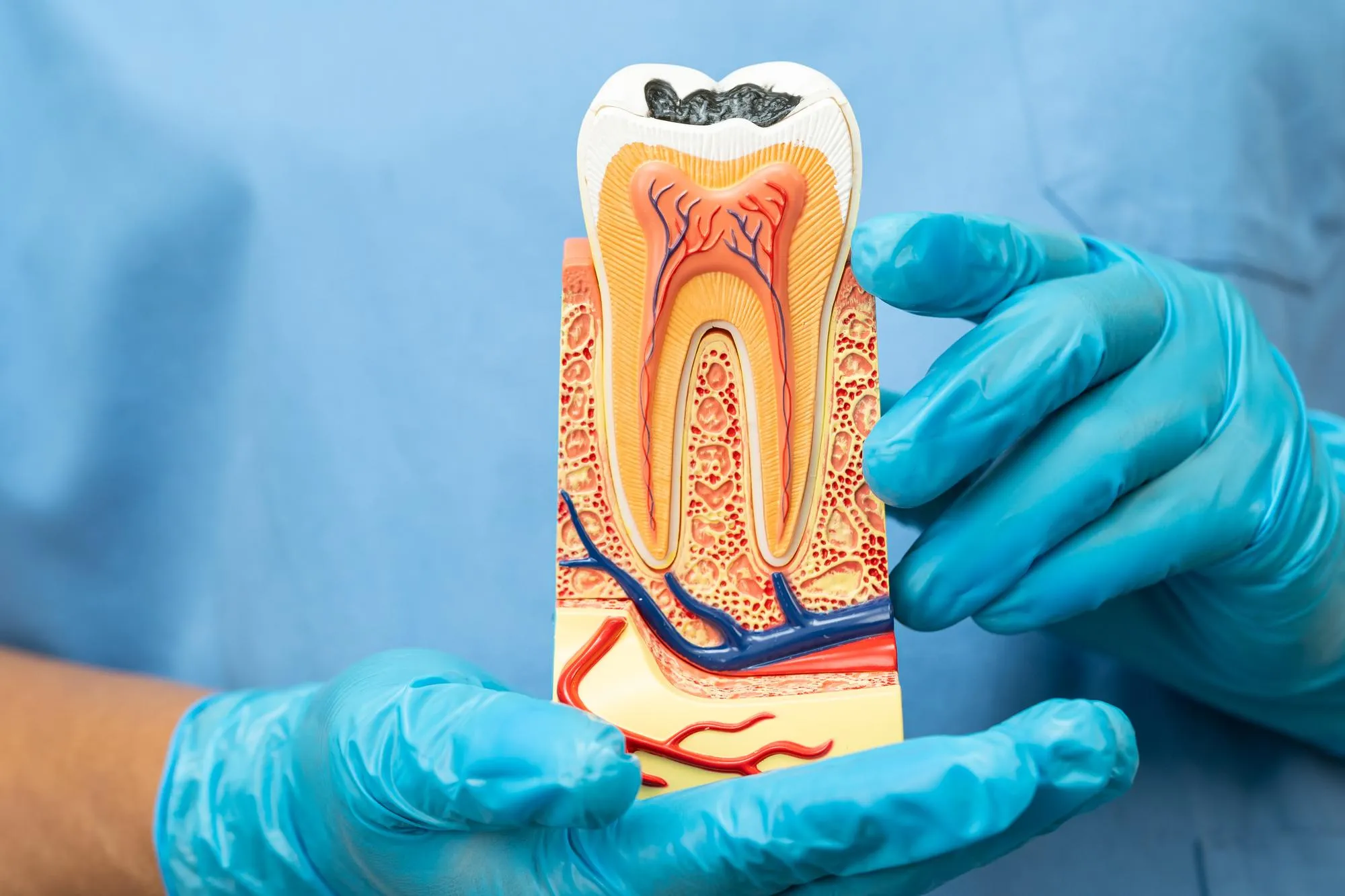Root canal therapy.
Root canal therapy, also known as endodontic treatment, is necessary when infection or damage to the tooth has affected the inner part of the tooth, which includes the dental pulp, a soft tissue with blood vessels and nerves located inside the tooth. Root canal therapy is a procedure that saves teeth that might otherwise be severely damaged and helps preserve the function of natural teeth.

When is Root Canal Therapy Necessary?
Root canal therapy is necessary when the pulp (the part inside the tooth) is infected or damaged due to:
- Deep cavities: When a tooth is affected by severe decay and the infection has reached the pulp.
- Trauma: When a tooth is damaged or fractured, allowing bacteria to enter and cause infection.
- Abscesses in the tooth: Infections that cause inflammation and the formation of a pus-filled pocket (abscess) around the tooth..
- Dead nerve: When the nerve of the tooth dies due to damage or infection, it can cause severe pain and the spread of infection.
The Process of Root Canal Therapy
- The dentist uses X-rays and clinical examinations to assess the condition of the tooth and pulp. This helps determine the need for root canal treatment and identify the possibility of potential failure.
- Root canal treatment is usually performed under local anesthesia, meaning the patient will not feel pain during the procedure. In some cases, deep sedation (sedatives) may also be used for patients who are anxious.
- The dentist makes a small incision in the infected tooth to access the dental pulp and remove the infected or dead tissue. This is the most important part of the procedure, as it helps prevent the spread of infection.
- After the pulp is removed, the dentist cleans and disinfects the root canals to ensure that all bacteria and debris are removed. This step is crucial in preventing the recurrence of infection.
- After cleaning, the root canal is filled with a special material (usually gutta-percha) that seals the canal and protects it from future infections. This helps the tooth maintain its function.
Once the canal is sealed, the tooth may be more fragile than before, so a crown may be needed to strengthen the tooth and restore its aesthetics and function.
- In some cases, a temporary filling may be placed before the crown is made to protect the tooth.
- After the procedure, the patient should attend regular follow-up visits to ensure that the tooth has healed properly and that no new infection has occurred.
